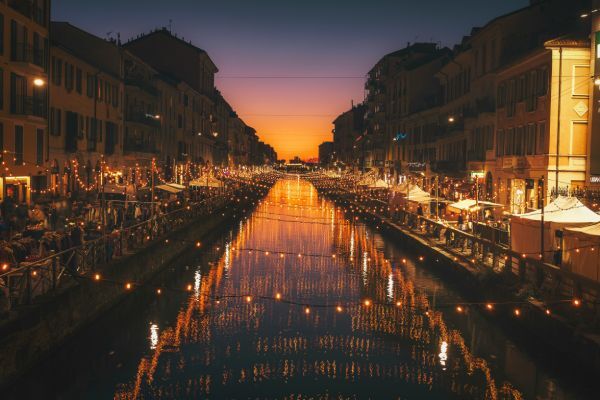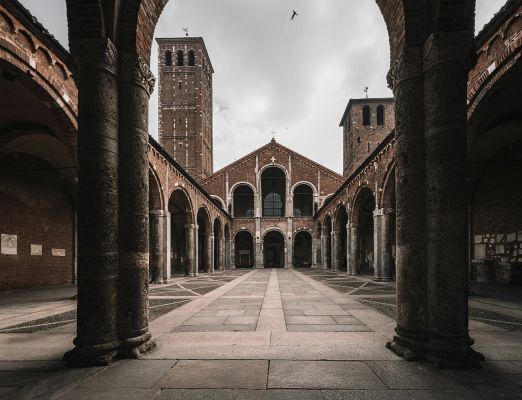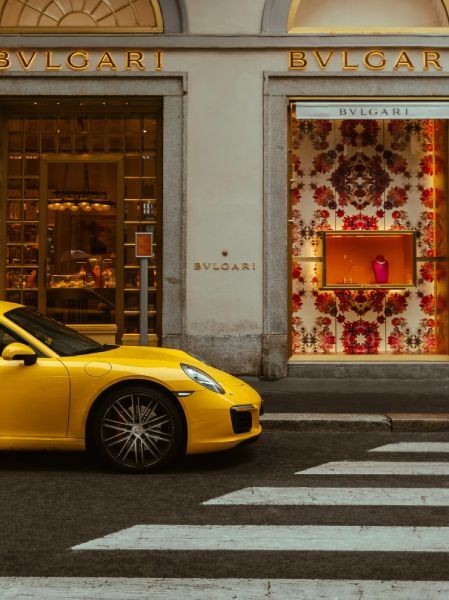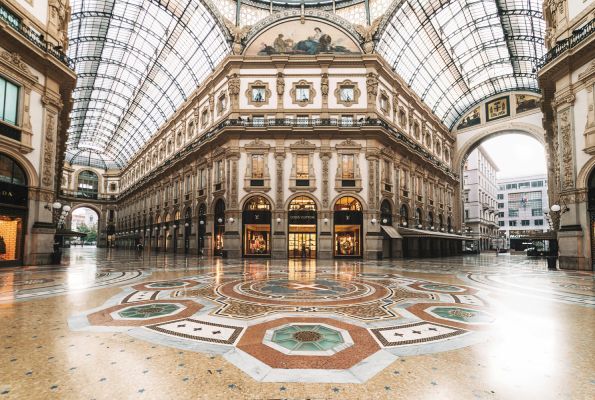Milan
Navigli District, Milan: Where History Meets Vibrant Culture
If you want to experience the real heart of Milan, the Navigli district is a must-visit destination. Known for its charming canals and dynamic nightlife, Navigli bursts with energy day and night. Not only is it a gathering spot for locals and visitors, but it’s also rich in history, filled with local artisans, and home to some of the best food in the city.
Where Exactly is Navigli?
Navigli sits in the southwest part of Milan, built up around two famous waterways: Naviglio Grande and Naviglio Pavese. These two canals meet at the lively Darsena basin, Milan’s reborn old port. Picture old cobblestone streets and bridges, bustling with energy and lined with bars and cafes. The main pedestrian area stretches roughly between Via Valenza and Via Magolfa, forming a cozy core full of life.
The Fascinating History of Navigli
The Navigli district traces its name and soul to its historic canals. These waterways played a vital role in Milan’s growth for centuries. Originally, the canals served as important trade routes, making it possible to transport goods, including the marble used to build Milan’s stunning Duomo cathedral, all the way into the city. You can still spot traces of this history along the canalsides.
Leonardo and the Locks
While sometimes credited as the mastermind behind Milan’s canals, Leonardo da Vinci’s true impact was in studying and refining the canal lock systems, like the “porte vinciane.” Leonardo advised on improvements and helped create efficient water flow. His touch can still be felt, but the canal system itself was a group effort built over centuries.
Covered Canals and the Changing City
As Milan modernized, many inner-city canals were covered up during major city works in the 1920s and 1930s. Yet, Naviglio Grande and Naviglio Pavese remain very much alive and central to Navigli’s identity. The Darsena port area, after a thorough revival and reopening, has become a gathering place where locals and travelers mingle by the water.
A Living Legacy
Today, these canals are lined with shops, bustling trattorias, creative studios, and lively bars. As you walk along the water, you stroll through centuries of change, from merchant days to washermen (at places like the photogenic Vicolo dei Lavandai, literally named after male laundry workers), to today’s center of Milanese nightlife and community events.
Top Reasons to Visit Navigli
A Cultural and Artistic Center
- Discover numerous art galleries, both classic and cutting-edge, popping up along the canal paths.
- Enjoy browsing vintage shops, artisan studios, and pop-up art spaces as you wander.
Food and Nightlife
- Sample an endless array of cafes, bars, and restaurants, serving everything from traditional Milanese dishes to international cuisine.
- Experience the famous Milanese aperitivo, buy a drink, and the accompanying tapas-style snacks are on the house.
- After sunset, bars and clubs come alive with music, people, and great vibes, stretching well into the night.
Something for Everyone
- By day, Navigli’s relaxed atmosphere and riverside paths are perfect for family strolls and casual shopping.
- By night, the energy ramps up, making it a top destination for those who love lively evenings.

Getting to Navigli District
By Public Transportation
- Metro: Take Milan’s M2 Green Line to Porta Genova FS. Exit the station and you’re just steps away from the canals.
- Trams: Lines 2, 9, and 14 all serve the Porta Genova/Darsena area, providing convenient options from various parts of Milan.
- Buses: Bus 47 connects Bisceglie M1 and Romolo M2, making it handy for exploring the Naviglio Pavese side. Bus 59 links Famagosta M2 and Porta Lodovica, great for the Navigli/Bocconi area.
- Night Service: The N6 night bus runs between Cadorna and Centrale and is part of Milan’s night network.
Driving and Parking
Driving is possible, but keep in mind that Navigli can get crowded, especially on weekends. A recommended parking spot is the garage at MUDEC (Museo delle Culture) on Via Tortona 56. This secure garage is just a short walk to the heart of the Navigli action. For more details and to pre-book your spot, visit the official MUDEC website.
What to See and Experience in Navigli
Darsena del Naviglio
The Darsena is the energetic main port where the canal network comes together. After its beautiful restoration, this public space is now perfect for a walk around the water, relaxing by the quay, or browsing local stalls that sell everything from books to clothes.
Vicolo dei Lavandai
Tucked just off Naviglio Grande, this historic alley used to host Milan’s male laundry guild, not washerwomen as often assumed. Its stone wash basins are now a photogenic piece of Milanese history, and a peaceful retreat from the district’s busy bars.
Art Galleries and Studios
The Navigli district is teeming with both established and up-and-coming art galleries. One highlight is the nearby Fondazione Maimeri at Corso Cristoforo Colombo 15, which often hosts various exhibitions. It’s always smart to check ahead for current shows and events before you go.
Shopping and Special Events
Every last Sunday of the month, Naviglio Grande transforms when the Mercatone dell’Antiquariato takes over with its sprawling antique market, where you can shop for treasures and curiosities. For more information and specific dates, visit the official Naviglio Grande site.
Frequently Asked Questions about Navigli
What are the opening hours for restaurants and shops?
Shops and studios usually open from 10:00 AM to around 8:00 PM. Restaurants and bars are commonly open for lunch and remain lively past midnight, especially Thursday through Saturday. Always check for exceptions, especially in August when some businesses may close for holidays.
Is Navigli family-friendly?
Absolutely. Navigli’s daytime atmosphere is relaxing and suitable for families, with kid-friendly cafes and plenty to see. In the evenings, the scene shifts more towards adults, but afternoon and early evening times are welcoming for all ages.
When’s the best time to visit?
The liveliest period is from late spring through early autumn. The weather is warm, terraces buzz with activity, and the canal banks fill with people enjoying food, music, and local events. If you want a unique Milan experience, time your visit with the antiques market or a seasonal festival announced by local associations.
Ready to Discover Navigli?
Navigli is more than just a district, it’s the pulse of Milanese tradition and modern enjoyment. Whether you’re sampling local delicacies, exploring art galleries, or simply taking in the sunset by the canals, Navigli guarantees a one-of-a-kind Milan adventure. It’s a place where the past and present blend in perfect harmony, waiting for you to explore every corner.
Useful Official Links for Your Trip




Discover Milan on Foot
Why our Milan guide works
Our mission is simple: help you explore Milan in a smart, walkable way. Every guide includes time‑boxed routes, an interactive map, and practical advice on tickets, transport, safety, and food, so you can discover Milan without overwhelm.
✔️ Clear, realistic Milan itineraries built by locals
✔️ Insider tips to beat crowds and avoid tourist traps
✔️ On‑route cafés, trattorie, gelato, and viewpoints
✔️ Offline‑friendly PDFs + map pins for your phone
FAQs
Will the itineraries work offline?
Yes. The PDFs are phone‑friendly and the map pins can be saved offline (instructions included).
Do you update opening hours and links?
We maintain 2025 updates and push changes to your download link whenever things change.
Are tickets included?
No, attraction tickets, transport, and meals are not included. We provide direct links and advice on what to book.
Refunds for digital downloads?
All sales are final. If you have trouble accessing files or the map, contact us and we’ll help.
Free Milan planning checklist (PDF)
Join 10k+ travelers planning to explore Milan smarter
We’ll email you the checklist to save on your phone.